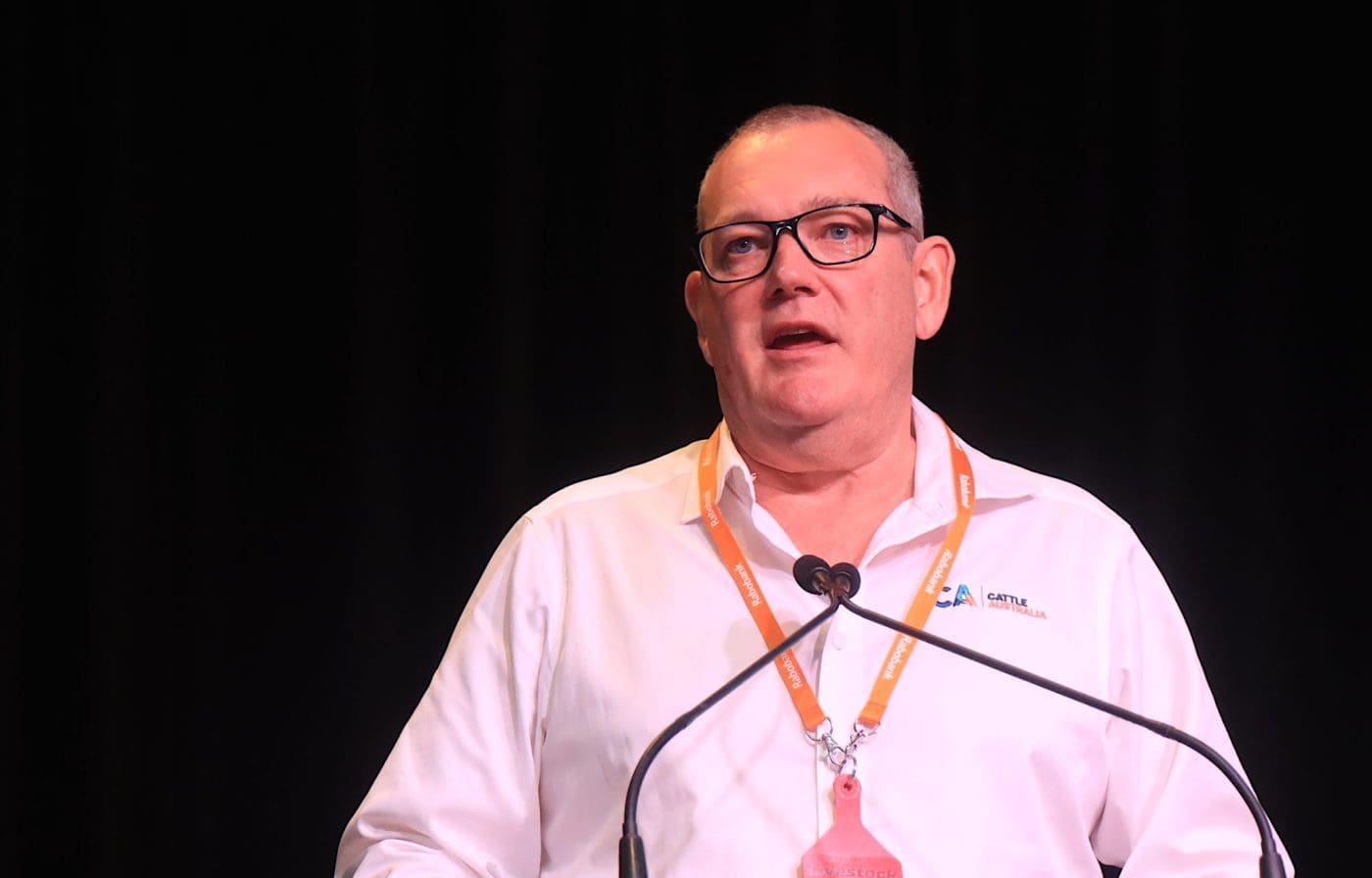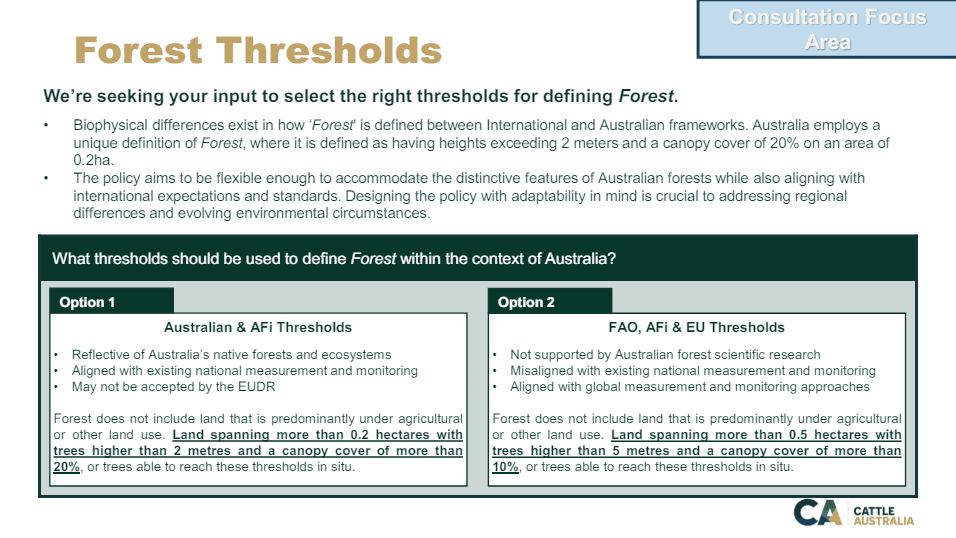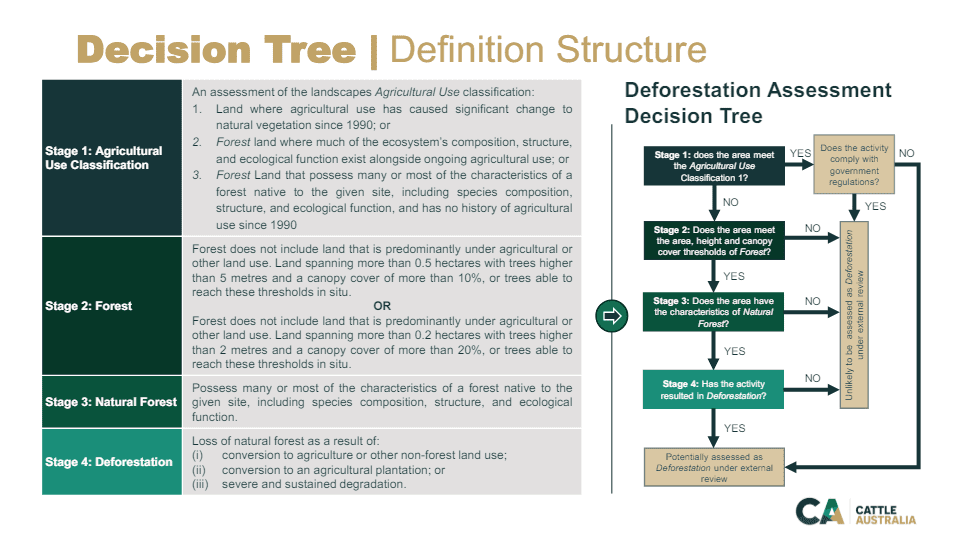CATTLE Australia has given a first look at its definition of deforestation in the Australian context, with the industry now having two weeks to provide feedback on an “information paper”.
Later this year the European Union is set introduce non-tariff trade barriers banning the import of goods linked to deforestation. Large supply chain companies are set to follow, with supermarkets, McDonald’s, banks and processors being pushed in that direction.
In response, Cattle Australia headed up a group of 50 industry stakeholders to formulate an industry-led definition of deforestation. Producers, supermarkets, processors and an environmental organisation have been involved.
The definition morphed into a “land management commitment”, which includes a series of case studies demonstrating what is land management – like regrowth control, mulga pushing for fodder and clearing fence lines.
Regrowth at the centre of the debate
With companies moving in the direction of setting their own deforestation legislation, environmental groups have been pushing for tight controls on regrowth.
Greenpeace, the Wilderness Society and the Australian Conservation Foundation released a “policy guidance” calling for the companies to make sure regenerated forest that “sustains a natural ecosystem” be protected – with forests 15 years and older meeting that definition.
CA’s land management commitment is calling for 1990 to be the baseline year for what is and what is not a regenerated forest. Land would also need to have the same composition, structure and ecological function as a virgin forest to meet that definition.
What is the current definition of forest?
There are two main definitions of forest, based on canopy cover and height of trees.
One is the Australian definition of land spanning more than 0.2ha, with trees higher than two metres and canopy cover of 20pc. The other is the EU and United Nations Food & Agriculture Organisation definition, which is land spanning more than 0.5ha with five-metre-high trees and a canopy cover of more than 10pc
Cattle Australia is seeking feedback on which definition would best suit the industry.
The sticking point for both the definitions is that they exclude land predominately used for agriculture. CA chief executive officer Chris Parker said making this part of the definition clear has been a focus of the land management commitment.
“The meaning of ‘land that is predominantly under agricultural use’ is often unclear and results in uncertainty for defining ‘forest’ and determining ‘deforestation’,” Dr Parker said.
“Landing a credible definition for ‘land that is predominantly under agricultural use’ is a central focus for this work because it flows on to inform definitions of ‘forest’ and ‘deforestation’.”
What is CA proposing?
CA is proposing a staged approach to the legislation where supply chains look at whether the land was predominately used for agriculture, meets the definition of a forest, has the characteristics of a forest and whether that forest has been lost.
Underpinning that is six different case studies that define certain land management activities needed for agriculture.
CA is also proposing a “make good” mechanism for the EU legislation, which has been backdated to 2020 – allowing landholders to clarify rehabilitation work that may be required.
Will the definition be adopted?
With the exception of McDonald’s, many of the supply chains going down the line of deforestation legislation are involved in the CA working group.
The World Wildlife Fund is another major player in the deforestation targets, as a founding organisation in a program called the Science Based Targets initiative, which is the reason a lot of companies are setting deforestation targets.
While multiple sources have told Beef Central the WWF is part of the CA’s working group, neither CA or the World Wildlife Fund have confirmed if the WWF is involved.
CA is facing an aggressive and well-resourced campaign from other environmental groups, who are also trying to influence the direction of the deforestation targets – namely Greenpeace, the Wilderness Society and the ACF.
Greenpeace has been superimposing pictures of koalas in meat wrappers on supermarket shelves and on McDonald’s burgers to imply beef production involves killing koalas. The three organisations working together have been making repeated attempts to discredit the CA definition before it was even released.
Within hours of releasing today’s information paper, the groups put out a joint statement saying the industry was trying to exploit loopholes and “let the bulldozers rip”.
One source recently told Beef Central that they know they can’t influence consumers, but they are a good chance of influencing company boards and shareholders.
Many companies are due to have their AGMs in the second half of the year and the SBTi is requiring them to have deforestation targets in place next year.
- To read the full information paper click here




Is Cattle Australia getting its knickers in a twist over this issue for no reason at all?
The major components of agricultural land use in Australia are cropping, livestock raising and horticulture. It follows that every parcel of ground on which cattle are grazed in Australia is predominantly under agricultural land use. [There was a time when grazing was permitted on certain State Forest land in Queensland, but I believe that is no longer the case]. As this CA document asserts – under all international frameworks, Forest does not include “land that is predominantly under agricultural, or other land use”.
CSIRO, along with academic partners, published a web interactive map of agricultural land in Australia in 2019. See: https://www.climateworkscentre.org/land-use-futures/australias-land-use/ . This clearly shows that essentially all the nation’s grazing land containing ‘forest’ (whatever land area, tree height and canopy cover are employed in its definition) is predominantly under agricultural land use.
CA states in its Overview that Deforestation is the loss of Natural Forest due to conversion to a different land use or severe and sustained degradation. When landholders manage grazed woodlands to recover lost productivity (because of tree thickening), they are not changing the predominant use of the land. Therefore, from whatever your perspective the ‘forests’ on grazing land in this country are not considered to be forests to which the term ‘deforestation’ is or should be targeted.
Thanks Bill. Let’s hope you are correct. I have faith in you but the other side is never satisfied and will be back for more.
thank you once again BILL
If the ACF etc want to get serious about deforestation they should look first at the rainforest regions which emit millions of tonnes of CH4 (methane) from rotting floor litter in these forests. In fact there is a good argument to clear fell 25% of it which would cover approx 45 years of methane production from cattle. But of course that exercise would expose their lack of rigorous science applied to cattle emmission levels wouldn’t it?
Also what about meat processors that draw power from a wind system ( not farm) that has cleared land to be conctruct
Where will all this leave the status of PMAVs in Qld?
I would not worry as all this is only being used by multinational corporations for marketing greenwashing purposes. McDonalds want an edge over Hungry Jacks, well they come up with some new marketing gimmick. Coles wanted a marketing gimmick over Woolworths, well they banned HGP’s for no reason.
There is no way this deforestation rubbish could ever be policed. Just ask yourself how could it be policed? I cannot think of anyway a non government entity could possibly police it.
EU wants it to feel good about themselves while they burn huge amounts of petroleum on air travel between 100km apart cities. In fact the EU, Coles, with their HGP ban create more emissions then they need to as HGP’s pesticides, herbicides, Rumesin etc, all work to make cattle put more meat on faster so are far better for the environment. All these high value markets that ban the above, like organic, various grass fed schemes, Coles, EU are actually worse for the environment and anti science on top of it. And it you really wanted to get really picky, to get into those high value markets, the cattle often come off land that was dense forest and flattened by dozers and chain. A classic example the Arcadia Valley in Central Queensland, some of the best cattle country in Queensland as it was originally dense brigalow bottle tree scrub.
It is all greenwashing and marketing for the almighty dollar.
What ever is locked in and white has to be able to be always maintained. That is why people locked in their vegetation.
No time frame, height etc should be used to say that the owner is deforesting their property.